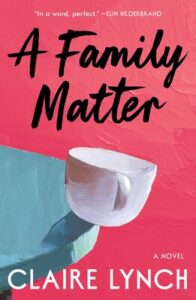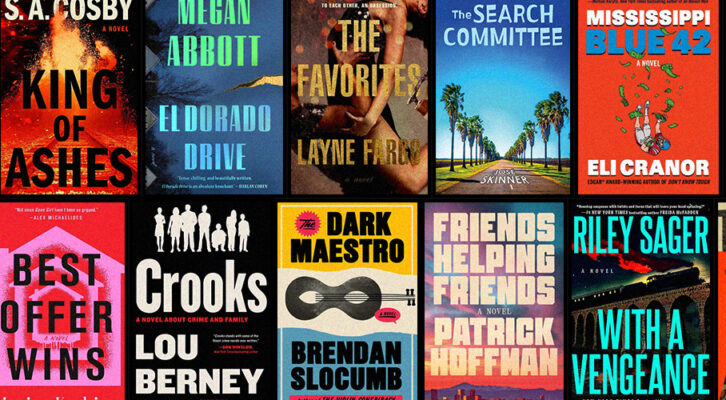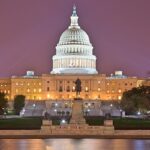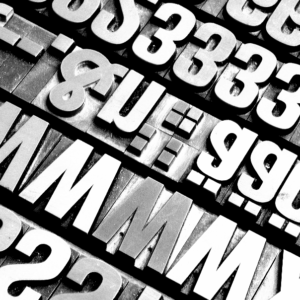
How Britain’s 1980s Anti-Gay Laws Impacted a Generation of Young LGBTQ Readers
Claire Lynch on the Legacy of Section 28 and the Parallels With Current Book Bans Across the Pond
Reading about book bans in the US, I couldn’t help but see the parallels. The battle between those arguing for diversity and LGBTQ representation in children’s books, against those who want to remove them from school bookshelves and public libraries, was all too familiar to anyone who had grown up in the UK. Back in 1983, British newspaper, The Daily Mail, brought a scandal to their readers’ attention.
A children’s book, Jenny Lives with Eric and Martin had been found on the shelves of a public library in London. The book, published by Danish author Susanne Bosche, is a quiet portrait of family life. Its black and white photographs show a small child coming home from school. There is a birthday party to plan, a delicious-looking cake. There is also a family with two dads. Bosche had written the book so that children from all sorts of families would see themselves in the books they read. She was amazed when the British press accused her of writing a piece of gay propaganda.
The controversy around Jenny Lives with Eric and Martin is often seen as a catalyst which led to changes in UK law, designed to restrict representations of LGBTQ+ people in publications and public life. The parallels with present-day debates are clear to see. Just as experts have pointed out that reading And Tango Makes Three will no more make a child gay than it would make them a penguin, four decades ago, educational professionals and activists had made the same case for common sense around LGBTQ+ books. The eighties was a decade of social change and political upheaval in Great Britain. The Thatcher government stood in firm defense of “traditional family values” and the climate of fear that associated gay people with the AIDS crisis led to frequent high profile stories in the press.
It is hard to describe lessons you were never taught, or conversations that were never quite had.
This conflict between gay rights activists and the government led to the proposal of “Section 28.” The clause would ban local authorities from “promoting” and teaching “the acceptability of homosexuality as a pretended family relationship.” On the eve of Section 28 passing into law, activists staged a series of protests, not least of all the intrepid group of lesbians who abseiled into parliament, and more who successfully invaded the BBC news live on air. Despite all of this opposition, the law passed on 24th May 1988. I was a few weeks off my 7th birthday. I would be into my twenties and graduated from college before it was repealed.
For all of the years I was in school, Section 28 was there. In order to avoid the accusation that they were “promoting” homosexuality, teachers avoided the subject altogether. The professional risks were all too obvious. For pupils, the consequences were profound, with generations remembering homophobic bullying that was seen, but not stopped, by adults who feared losing their jobs if caught defending victims. It is hard to describe lessons you were never taught, or conversations that were never quite had. I can, of course, remember the abrupt way a teacher would change the subject in a class discussion. The slurs thrown around and not corrected. I can remember the looks exchanged between pupils, or with teachers, the silent understanding shared in those moments. It is hard to understand what all those deeply serious politicians in the Palace of Westminster thought they were doing. All of that parliamentary time, all of that effort, just to deter the schoolgirls of England from falling in love with each other in double maths.
*
Like many LGBTQ+ adults who grew up in the 1980s and 1990s I improvised an education in the place of what was missing, desperately seeking out hints of queer culture in TV shows, novels, or song lyrics. By my mid-teens I had made “being good at English” a central component of my personality. Books, as many of us know, are an excellent place to hide. By fifteen I had read all the young adult novels in the local public library. (Bear in mind it was the mid-nineties, in a small English village, there weren’t that many YA novels to get through). In the hope my English teacher would notice, I moved on to the “Literature” shelves of the school library, finding many new favorites on the very bottom shelf. In the furthest, darkest, corner of the library I found Wilde, I found Woolf, and then I kept reading the W shelf.
The book was about everything I feared… And still. Just the existence of this story, the book itself, was enough.
I carried Oranges Are Not the Only Fruit home, buried at the bottom of my schoolbag like a burning coal. I read it, secretly, in my bedroom. It was hardly consoling. The book was about everything I feared, rejection from family, religious judgment, exposure, all dialed up to the extreme. And still. Just the existence of this story, the book itself, was enough. I didn’t have a computer, never mind the internet. I couldn’t have found out anything more about Jeanette Winterson if I wanted to, but I did have her book in my hands. I knew she was real, out in the world somewhere, writing books, understanding.
It was almost thirty years ago when I read Winterson’s novel for the first time. Perhaps an exception had been made because the novel had broken into mainstream culture with a BBC adaptation. Perhaps the school librarian had simply understood how books work. The copy of Oranges Are Not the Only Fruit held in my school library was labelled with a special sticker: “Sixth-Form Only” to restrict its readers to pupils over sixteen. It was in this way restricted, and certainly not “promoted,” but it was, nevertheless, there, on the shelf.
Years later, when I came to write my debut novel A Family Matter, I realized exactly how much of LGBTQ+ history had been kept from me. I filled the gaps in my knowledge by reading, books, archives, newspapers, court reports, anything that would help me to understand. The more I read, the more I understood just how many lesbian mothers had lost legal custody of their children in the 1980s. Figures suggest this happened in around 90% of cases. Exact numbers are almost impossible to trace since most mothers, knowing the likely outcome, didn’t even get as far as the courtroom.
Through the fictional characters in A Family Matter I have tried to go beyond these statistics and to think instead about what it would have been like to live through this period, and to wonder what might happen next. The novel takes place in a quiet British suburb where people act, as people almost always do, according to the rules, unwritten and otherwise. I am deeply attached to every single character in this book because, whatever the consequences, they do what they believe is best. I think of A Family Matter not as a story about historical prejudice, but one shaped around good intentions. I only hope the same is true of our own moment in history.
__________________________________

A Family Matter by Claire Lynch is available from Scribner, an imprint of Simon & Schuster.
Claire Lynch
Claire Lynch has a doctorate from the University of Oxford and is a professor of English and creative writing. Her work has appeared in The Washington Post and on BBC Radio. She lives in Windsor, England, with her wife and three daughters.



















